Welcome friends, familiar and new. This letter is in response to Alexander M Crow’s generous call for letters on the theme of ‘Let’s take a walk’.
The brief was to write an observation piece
through the eyes of our hunter-fisher-gatherer ancestors.
And you can find out more about the project here —
The ancestors of the land I live on proved more forager than hunter. I’ve also drawn on my own knowledge as a community herbalist, but please be aware that nothing here should not be taken as medical advice.
The post is best read in the app or on the Substack website as some email clients may truncate it part way through.
Let us follow the forest path towards Le Pont Rouge an ancient bridge from the Iron Age, built by the Osismii (Osismes locally) — Gallic Celts who were here before the arrival of the Romans. There have been settlements in this area going back 700,000 years, to ancestors we can hardly imagine. By neolithic times (late Stone Age) the Osismes were well-established, at one with the land, our guides as we follow in their steps.
Late March is all bluster – winds and rain hiss and spit only to clear suddenly into cool blue sky, high white clouds. We might be Osismes scanning for changes in the weather, foraging for herbs. The riches in this forest are immense and, for the ancestors of this land, even more profuse, unpolluted and vital.
The nettles (Urtica dioica) are tender, vibrant green, bursting with tonics to ease us from winter hibernation. A huge handful could be combined with marshmallow to ease childbirth, regulate menstrual flow or taken with angelica to stimulate lactation. It astringes the gut to help with inflammation and is useful for infections, peptic ulcers, acid reflux, diarrhoea, gastritis. Nettle supports liver and kidney function and assists the liver in clearing blood and reduces blood sugar. Nettle is a wonderful nutritive tonic for the blood, for anaemia or after illness. It also helps modulate allergies.
The Osismes would have known all this from handed down wisdom, matching plants to those who needed them. They would have understood from observation that nettle is a diuretic, relieves fluid retention, helps with incontinence and arthritis. That it clears congestion guarding against catarrh, bronchitis, coughs and sinusitis. That its antihistamine actions help with conjunctivitis, the ‘red-eye’ people who gathered around fires for warmth, cooking, protection and story, might well have suffered with. The fresh juice eases fevers, is beneficial for lung conditions, for wounds and burns or to staunch bleeding, and for bites and stings. If nettle stings, she teaches us boundaries, but also injects us with her healing goodness at the same time.
We reach the bridge, ancient stones balanced low to the water. Bridges connect worlds. A gesture of ‘yes’ to crossing a divide. When we make the crossing we become permeable to the unfamiliat place. Bridges are quotidian and sacred, spanning the known and the unknown. To exist, the bridge has to be accepted by both sides. Today the bridge spans not only a river, but time, leading us back to how this land was centuries ago.
Along the banks, blackthorn (Prunus spinosa) is in full bloom. A tree of mystery with stories of darkness, her blossom is the first of the Spring. Frothy white and preceding her leaves, the snowy petals stand out against her pearl-black bark, her sharp thorns the epitome of boundaries. Later in the year her purple-black wild plums (sloes) will burst with medicinal properties. But for now, a cold snap will follow her blossoming. The Osismes knew this without any need to check with Meteo France. By the Middle Ages their descendents will make staffs from blackthorn, imbued with magic for and against evil, wands for cursing or wands of protection for healers. A liminal tree. A piece of blackthorn over a Breton door protects the home, most powerfully if harvested under a full moon. Throw a handful of her thorns into a holy well and if they float your lover is faithful.
Stand on the bridge where it crosses La Rivière d’Argent, which takes its name from the lead and minerals in her water, a silver river that plunges beneath granite boulders, sings softly and loud. Songs of spirits held there by enchantments, say the local legends. A river so clear we can view the earthy, mineral-rich riverbed of this alive-with-life water, a liminal place between two banks.
For the last three and half years I’ve inhabited a liminal space. I’m a slow settler. When I moved to North Wales, where I lived for almost 20 years, it took the first five years for me to feel I ‘lived’ in the village of Tanygrisiau, tucked beneath the Moelwyns and the slate mines of Cwmorthin in Gwynedd.
Perhaps my slow settling is to do with moving into houses that could be beautiful, but maybe not in my life time – the constant process of renovation has its own liminality.
Perhaps it’s because I’m from Teesside (UK) where almost every family arrived as immigrant labour for the iron and, later, chemical industries that sprang up around the rivermouth from the late Victorian period. On my mother’s side, I was brought up to believe that we were not from Teesside, but Ireland, specifically County Wicklow, a place I first visited in my 40s. My father’s family were quieter about their ancestry but had roots in County Wexford. It gave me a sense of never fully belonging to the place where I was born,the only place I knew until I left for university.
Perhaps it’s to do with language. If my belonging to Teesside felt provisional, I was at least feel fluent. When I return my accent shifts, the local vowels taste like home as much as the salt sea air does. But in Wales, after 19 years I remained at toddler Welsh, kind neighbours always rescuing me with their good English. In Brittany, where at least I can greet people in Breton thanks to my toddler Welsh, I begin conversations in French only to fizzle out into English (though it’s slowly improving). But even if I become fluent, I will never dream in French or Breton.
And there is also the language of the land – the accumulated sediments of non-verbal languages going back to neolithic times, and beyond… The myriad ways each tree, plant and animal communicates. It takes time and an extraordinary degree of attention to hear the ancestors of this place whispering in the breeze and through the leaves of the trees. It requires tending to each meadowsweet flower, each leaf of plantain, each ox-eye daisy, each birch tree in bud… to ‘hear’ the scents and shapes, vibrations and textures — voices of the flora.
It feels right to be a slow settler on this sacred bit of earth, to feel a little more of its story in my bones and heart each day.
Along the banks of the river, cleavers loop and trail, sticky and verdant. Cleavers (Gallium aparine) has a host of common names: sticky weed, sticky willie, bedstraw, goosegrass... It has long square-shaped thin stems covered in fine hairs that make it stick to animals and clothes. Later in the season, tiny four-petalled white flowers also grow directly from the stem. But in March it is fresh and cleansing, a green taste — something between lettuce and cucumber.
It’s a diuretic that helps the liver to clear toxins. It treats kidney stones, urinary infections and irritable bladder. It helps with chronic skin conditions and eruptive infections such as measles and chickenpox. Cleavers soothe internally — promoting lymph and immune responses — and externally, cooling inflammation, washing cuts and grazes. As a lymphatic tonic it purifies blood, clears lymphatic congestion and swollen glands, modulates inflammation and, like nettle, lowers fevers.
The Osismes had actual bridges and bridges through time – their ancestral links to the people who had passed down dreams and herb lore through millennia on this land, and to other Celtic/Gallic tribes. Deep links to Irish people in exactly the areas my family are from — Co. Wexford and Co. Wicklow. Later (in the Romano-Celtic periods and after) Cornish and Welsh Celts fled here to escape the Anglo-Saxon invasions. They mingled and the region became known as Bretagne. The newcomers included the Wenefed Gwened, now known as Gwynedd.
I came here with a sense of vocation that I’m still unravelling. I adored Wales and only discovered after I moved there that my maternal Grandmother’s family, despite claiming to be ‘pure Irish’, had Welsh relatives exactly where I’d settled. I loved the house in Wales. It was quirky and recalcitrant, an internal maze of oddly shaped rooms, the place where I brought up and home-educated my four (now adult) children. What I knew in my gut was that the call to this forest in Finistère was too loud to ignore. I feel it still, even though the process of settling is so slow, even though living in this liminal phase makes me pause halfway across Le Pont Rouge, not knowing in which direction to turn.
The Osismes who walk with me whisper, Let us walk to the north. We set off, following paths walked by the ancestors of this land across millennia. We walk towards the Campe d’Artus, approaching from behind the encampment’s gate of granite boulders. We arrive first at La Scorie, the Lightning Stone. It looks like it might be a hunk of leftover lead waste from the ovens of the nineteenth century mines further into the forest. Or it might be mistaken for a chunk of fallen meteorite. But the stone is ancient, believed to have been sacred to the Druids here, a stone of magic and ritual, a link to the Druids of Ireland and Wales.
A little further north we pass La Grotte d’Artus, where Arthur sleeps until the darkness grows so deep that he is needed again to bring light to the world. On past Le Menhir Disparu, a small neolithic stone that one day disappeared, only to reappear again three years later and past La Mare aux Sangliers, where the wild boars once bathed, giving the waters healing powers, and where Arthur bathed his wounds.
The first dandelions are flowering, peppery leaves and astringent flowers to chew as we walk, to gather for eating fresh or dry. Dandelion leaf (Taraxacum officinale, fol) is a trophorestorative herb, a plant with a special affinity for healing and supporting a particular organ, in this case the liver, the body’s processor extraordinaire. Alterative herbs like dandelion can be safely used for long-term and chronic conditions. It’s a strong diuretic, which also makes it effective at clearing the kidneys, and reduces water retention, alleviating urinary infections. Cleansing and supportive, it is a lovely herb for treating fatigue. The cleansing also acts on the skin — by assisting the liver, healthy skin can regenerate. Good for eczema, psoriasis, acne… and the sap is and excellent topically treating warts, verrucas, rough skin, calluses and corns. Dandelion is full of nutrients, with high levels of vitamins A, C, E, K and B6, carotene, folate, riboflavin, thiamine, calcium, iron, manganese and potassium.
The roots (Taraxacum officinale, rad) contain a powerful pre-biotic, inulin, which helps provide sources for healthy bacteria to flourish. All roots store the sugars of the plant so are nourishing and dandelion roots are bitter, promoting bile that aids digestion. When bears emerge from hibernation, dandelion is the plant they seek first to get their systems working after the stasis of winter. The liver-supporting functions of the herb also help to break down excess hormones so can help prevent oestrogen dominance and Premenstrual Syndrome (PMS) as well as the easing the cramping and headaches associated with heavy, painful periods.
And so to the camp itself with its imposing stone gateway and La Motte Féodale, where once in the High Wood there was an Osismes settlement complete with houses, workshops, places of worship, a well… Before the Romans came and made it their own. Before the buildings disappeared into the underland of archeology and myth.
There are catkins on the willows, whose bark can be chewed to ease pain, and the ash trees and birches are beginning to show buds. Across the forest floor is a cheerful profusion of primroses. Primrose leaves and flowers are Spring foods. Primrose roots and flowers contain a fragrant oil with the chemical primulin, a saponin is also found in daisy, making it moistening, the leaves making a soothing wound-healing salve. An expectorant, primrose treats coughs. It’s antispasmodic and astringent, and an ancient medicine for muscular rheumatism and paralysis. An infusion of the flowers as a tea is supportive for anxiety and the whole plant is sedative, helping with restlessness and insomnia. The full moon, Worm Moon, is imminent as we walk — tonight I’ll take drops of primrose flower essence to sleep when the moon’s energy is high.
Walk back to the bridge and cross to the south. Along the path of the river is Le Gouffre – the abyss. The legend is that Princess Dahut threw the bodies of her lovers down the steep banks of granite rocks. But this story is far in the future for our Osismes guides, a dream they are yet to have.
It tells of the mythical city of Ys, which many stories place on the coast, while other stories locate it here, on the banks of the tumultuous river. In the oldest versions the city was sunk due to the hubris of its king, Gradlon.i Two hundred years later, Albert Le Grand shifted the blame for the destruction of Ys to Gradlon’s daughter, Dahut. Portrayed as a wicked young women, who took lovers, murdered them and planned to kill her father too, she stole the keys to the city and opened the gate that kept out the waters. The city flooded and she was drowned trying to escape but became a mermaid (Mari-morgan) who still haunts the area with her songs.ii
A little further from the river is Kastell Gwibell. Once a fortified village and later a feudal castle overlooking the abyss. The castle was destroyed by Bertrand Du Guesclin, who rampaged through Breizh (the local name for Brittany) in a war to take the region’s independence and subject it to Charles V of France.
These are the woods that my character, Viola, walks in my new novel (smiling at grief in a house in a forest where life grows) setting out to collect herbs for a Summer Solstice celebration for the surviving community around her home of L’Autre Rive.
She would be in the forest to watch the sun sluicing rivers of colour across the grey-blue morning and keep her own dawn ritual of Alban Hefin. … All her ghosts would be with her today. She breathed deeply. Come then, come with me. Help me find the last herbs for the feast. Violets, especially the violets. […] She crossed the track, descending the steep slope towards the river, breathing in humus and tree breath. Birch made her think of Isabelle, still asleep before the long day ahead. She’d gathered buds from the tips of the branches in Spring, steeped and distilled them with the small harvest from the Gaultheria shrubs she had seeded in the forest, extracting powerful wintergreen oil that would soothe pains. But some of the birch twigs and and buds, alive with sap, she had kept to make a gentle tree essence, […] The birch trees were in full Summer leaf now, releasing their clean mintiness into the air after yesterday’s rains and the morning’s dew. She would return soon to collect leaves, fresh for vinegars, dried for teas. But for now she rested a hand on a papery trunk, bones easing into the day, muscles relaxing, mind and gut lightening at the touch. Beneath her feet the birch’s fibrous roots fanned out, shallow and wide. She breathed deeply. Oak on the breeze, thick and loamy, moss-deep, tang of bitterness grounding its sweeter notes. Hugo’s body laid at the feet of oaks […] She bent down and smoothed a finger over a petal. Viola riviniana, odourless, unlike the the sweet Viola odorata, which was harder to find, though sometimes she came across it—the relics of cultivated gardens… Riviniana would do the same work—clear the lungs, let grief flow out.
Today the violets are clumps of leaves not yet in flower.
There is so much to forage in this extraordinary place that has generously sustained humans for so long, but for now it is time to take leave of my Osismes guides, to return to the present.
A long time ago on a pilgrimage to the island of Iona, the guide used a question from an Old Testament story — ‘What are you doing here, Elijah?’ It has stayed with me as a question to ask myself. It’s the question the ancestors are asking me to unravel in this place, in how I live and weave the threads of story and healing.
This is a place of thresholds and borders, a liminal space where much of what I do is simply to walk and listen, to pay attention in expectation, alert to moments of change, challenged to hear something that can never quite be said — the voices of flora and fauna and their meaning-rich silences. I love that this place has opened spaces in my life and writing that are still emerging, has taken me to the border between one life and another.
What does the map of your liminal spaces look like? (In your life, and your writing.)
What in your writing or life (or both) is on an edge, a cusp… being anticipated, not yet materialised, struggling to find the words…?
And on your map, where are your bridges?
Where are the liminal crossing points between states and stages, the spaces that give you the opportunity to connect?
Where are there no bridges? And what areas might need them?
Thank you for walking with me.
i. Le Baud, Pierre (1480). Cronicques et ystoires des Bretons Tome III (in French) (Société des Bibliphiles Bretons, 1911 ed.). pp.42–45.
ii. Le Baud, Pierre (1480). Cronicques et ystoires des Bretons Tome III (in French) (Société des Bibliphiles Bretons, 1911 ed.). pp.42–45.





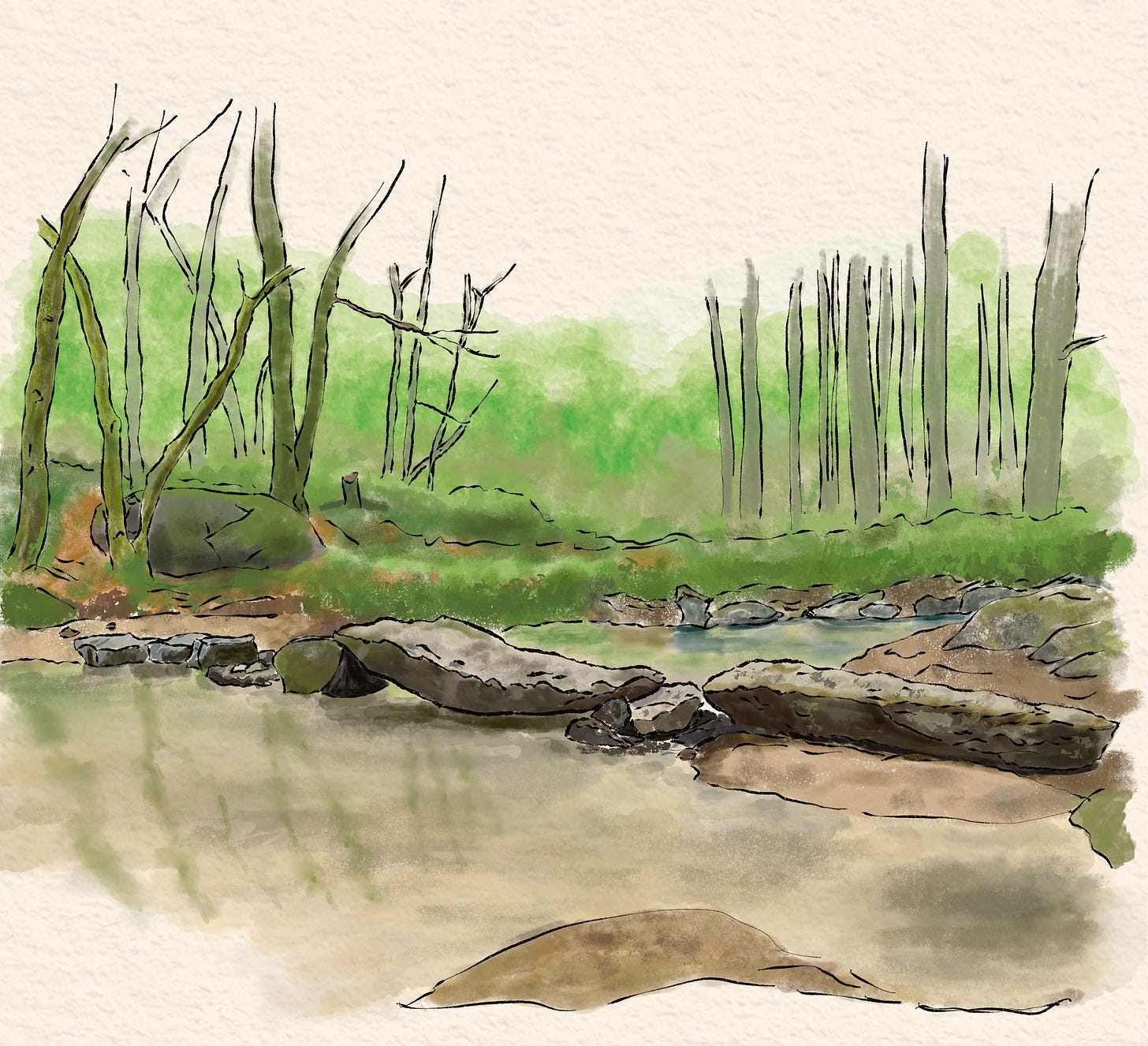



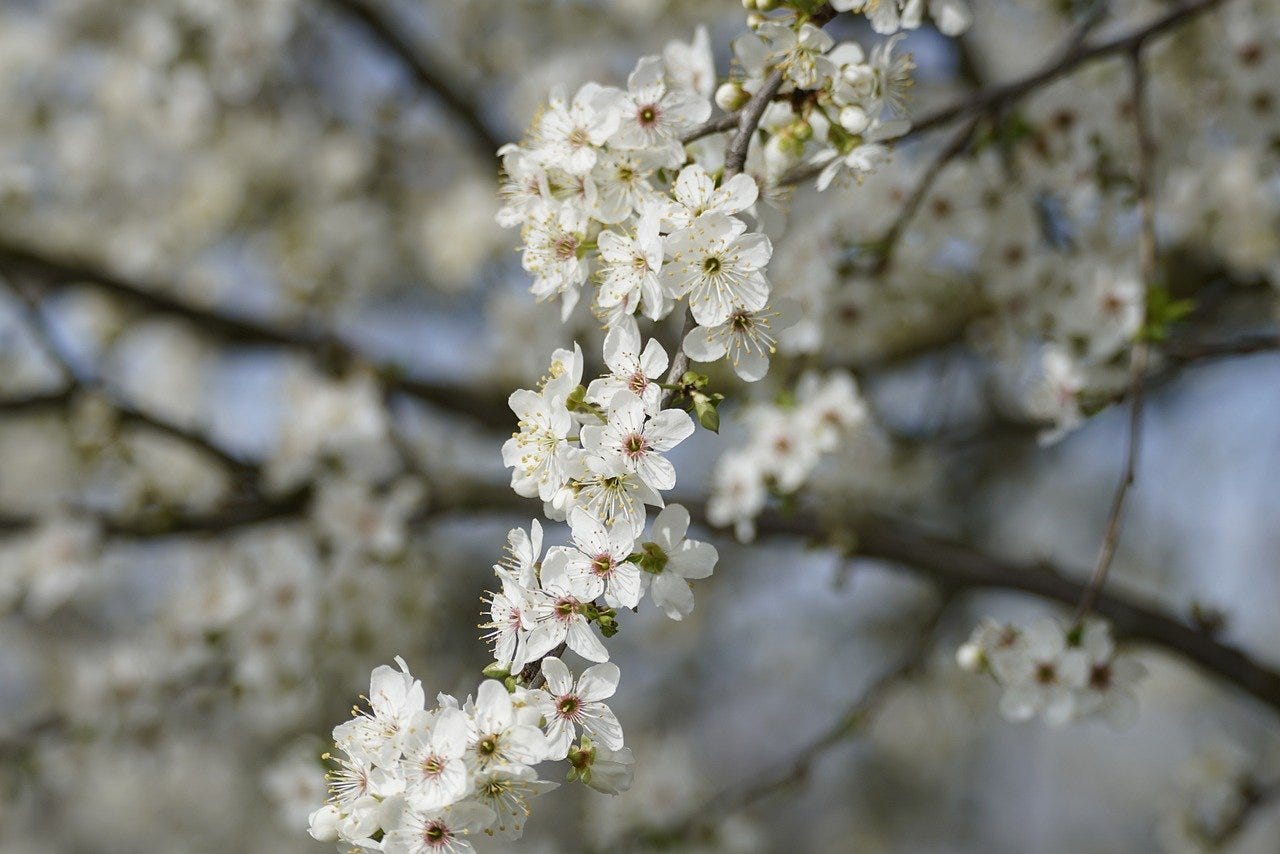


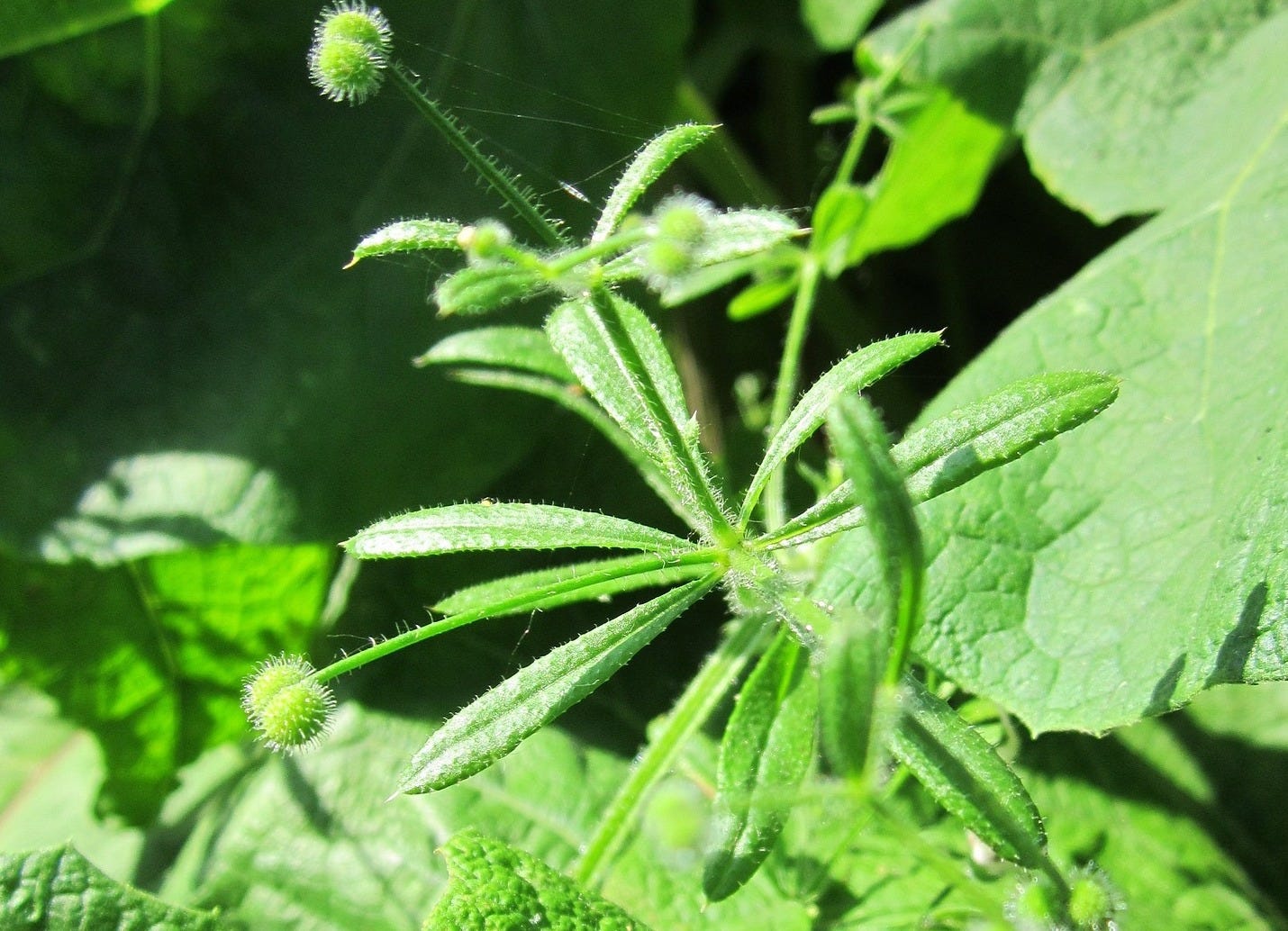

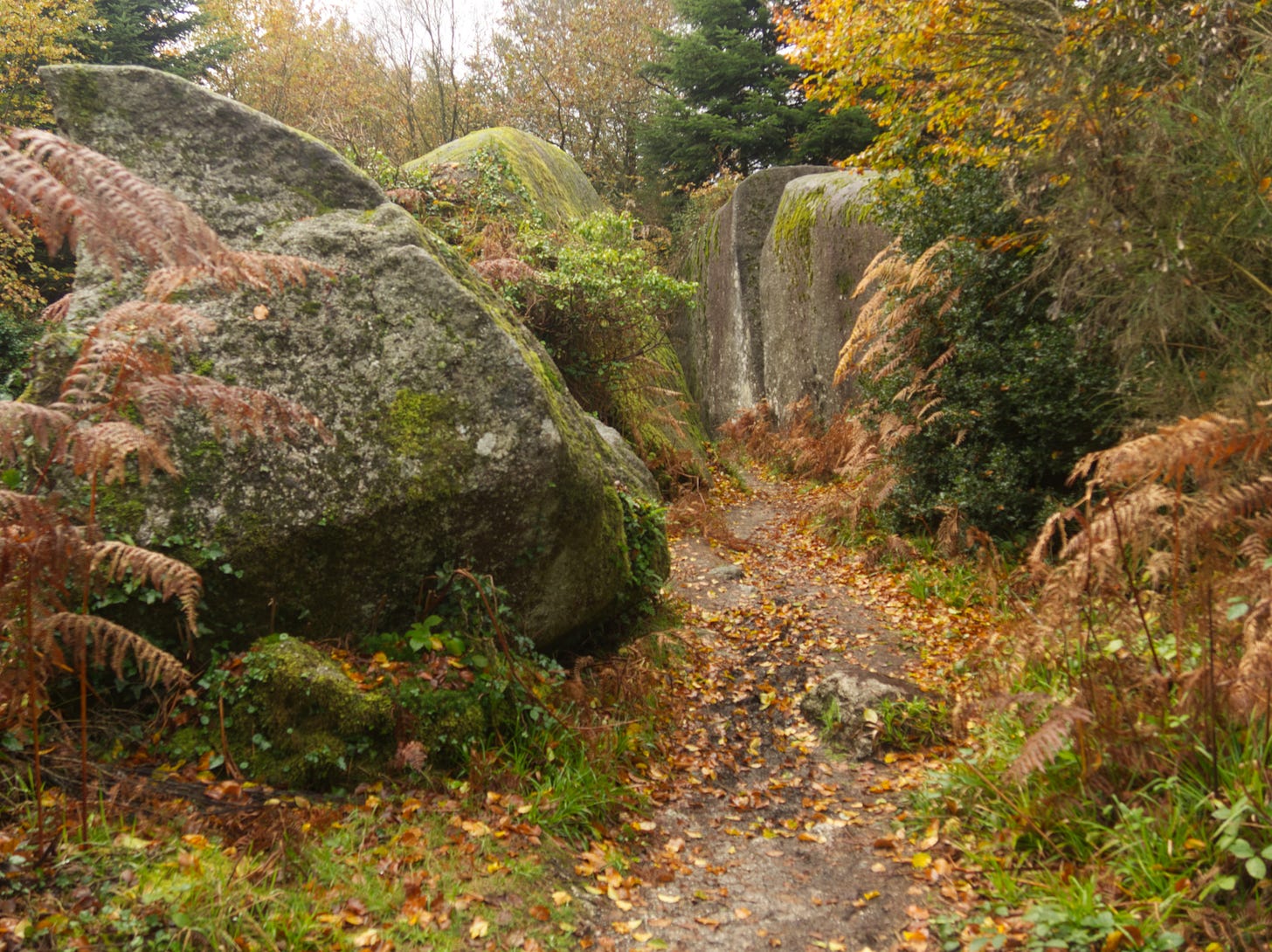
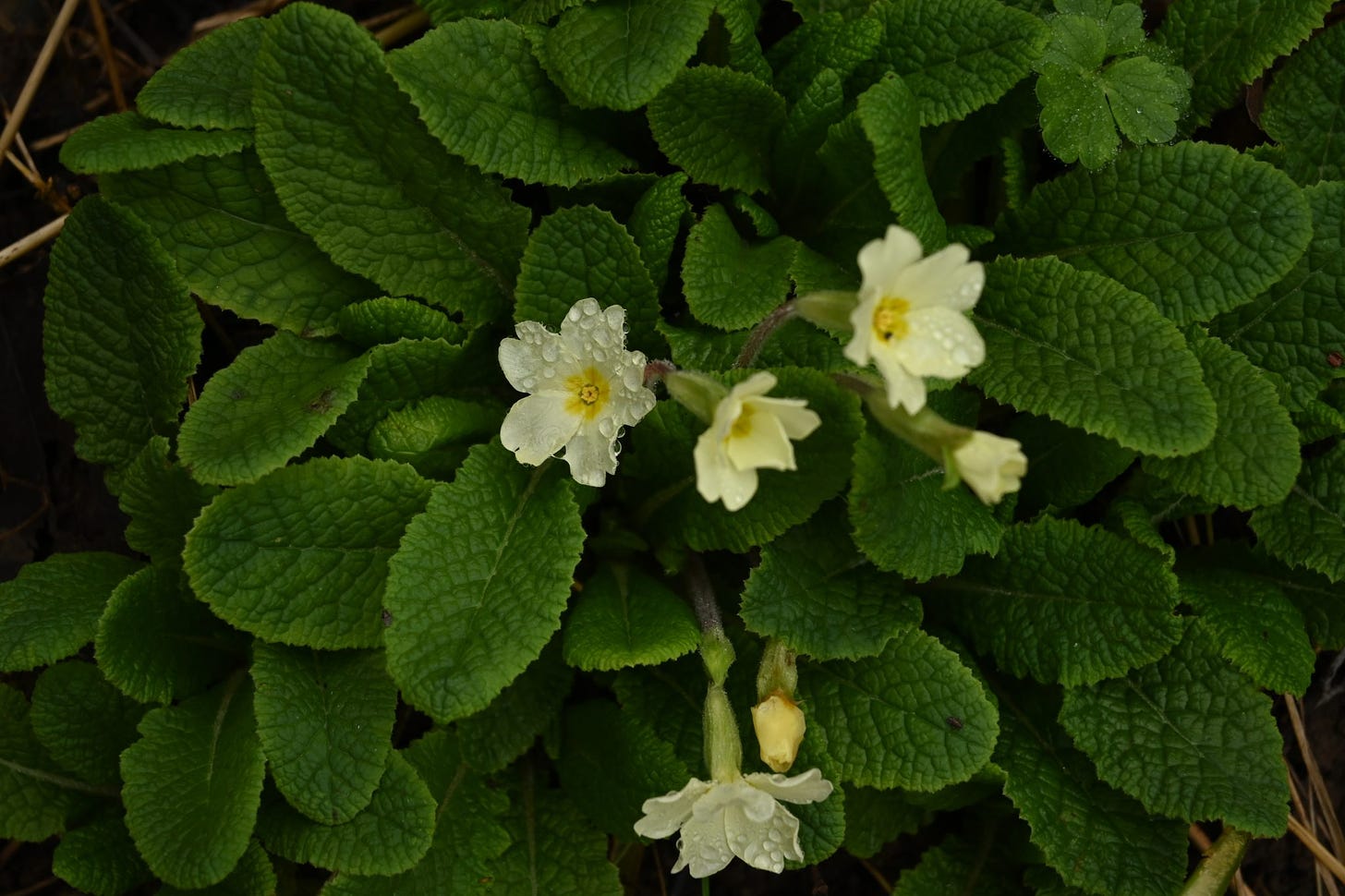

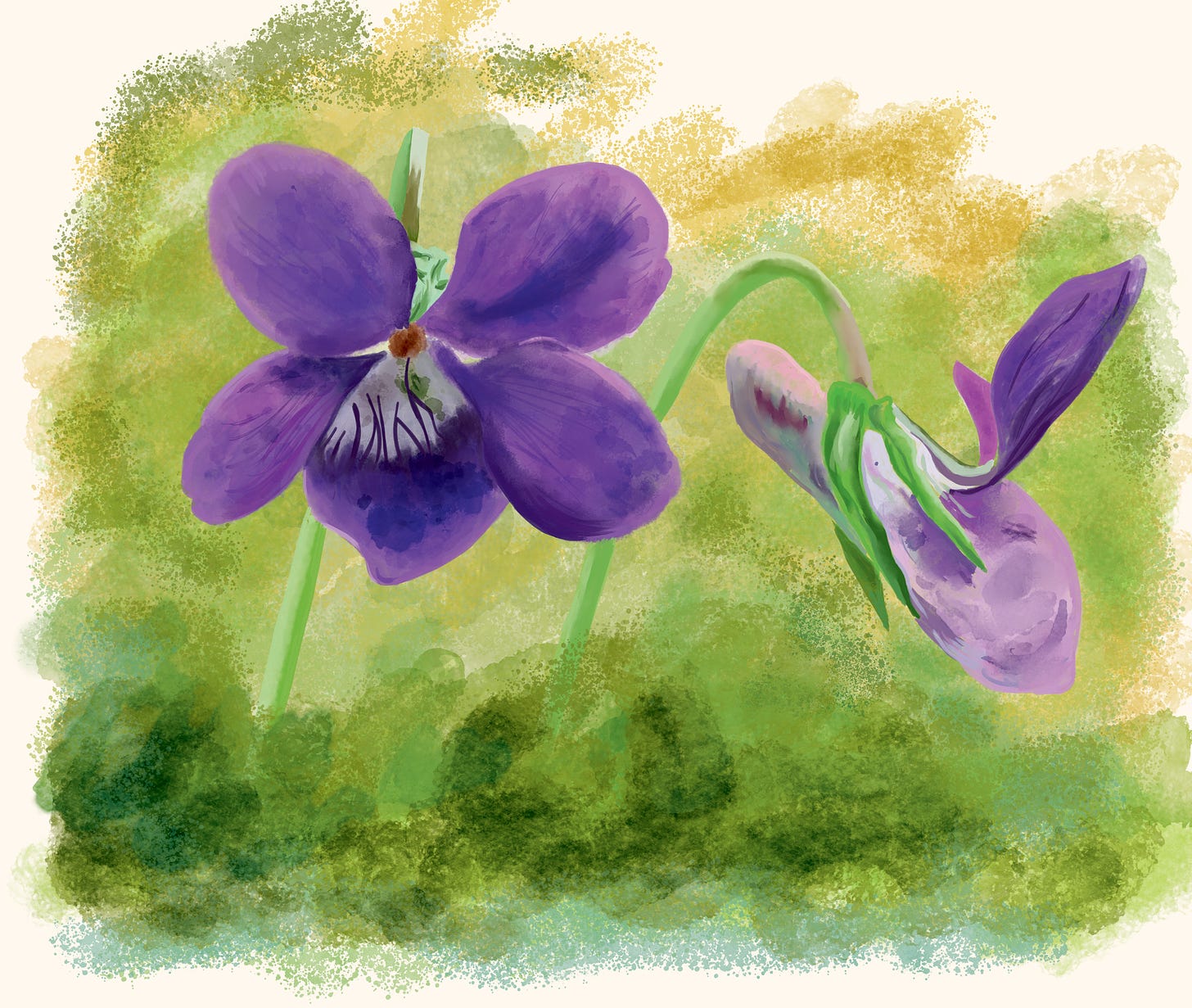



I have just sent out the cross-post of this piece, and found myself reading the whole thing again, despite having already done so three times. I think this in itself tells readers something—there is so much to enjoy, so many delicious details, all neatly wrapped together through and with your own history and that of the places you mention.
Add to this the thread of liminality stretching throughout the whole, the beautiful illustrations (and yes! Your husband should certainly start a Substack of his own!), and a sense of timelessness, of Being in the land, of listening to her and accepting, and I was in my very happy place!
Thank you so much for sharing this, and allowing me to cross-post. I am very grateful.
A delightful piece - I will be gathering nettles and dandelion leaves this year, I think